Packard Fellowship



told the Wisconsin State Journal that Cedarhurst told her it plans to convert the facility into pri vate apartments. She said My Choice did not place any restric tions on care and services pro vided at Cedarhurst.
Ledger expressed concern that displacement at the facility reflects a wider trend, especially after a facil ity in Milwaukee recently converted to private apartments and forced residents to move.
The resident’s ex-wife told the Cardinal she has been trying to find a new home for her ex-hus band for over a year, but the few beds available were reluctant to take Medicaid recipients.
“I call places that say, ‘Oh, we have openings,’” she said. “‘We want to meet [him]. We want to hear all about it.’ And the nanosecond I would say he’s on Family Care [they say], ‘Oh, we don’t have any beds.’”
organization is working with resi dents to ensure they are not left without a home.
By Francesca Pica STAFF WRITERAssisted living facility Cedarhurst of Madison notified res idents they must find new homes by Dec. 10, when the facility will stop accepting Medicaid payments.


Cedarhurst Senior Living announced on Oct. 12 it is ending its relationship with My Choice Wisconsin, a managed care organi zation whose Family Care program
oversees long-term care for elderly adults and adults with disabilities as part of Medicaid.
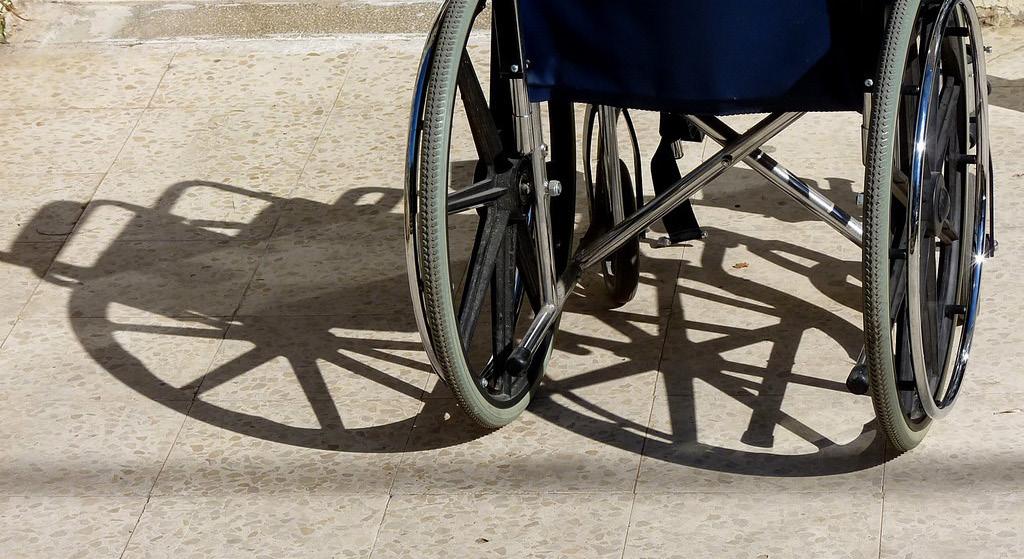
“We found that our partnership with this provider and the restric tions on care and services because of the relationship does not align with our mission as an organiza tion,” Cedarhurst Division Director of Operations Sherry Kaiser said in a letter sent to residents.
My Choice CEO Maria Ledger
“I’m sorry this is happening to our members, and I am concerned that it is not the last we will be see ing of it,” Ledger said.
According to My Choice, 27 resi dents in the Madison facility are My Choice members, and many will not be able to afford the higher private rates.
One longtime resident of Cedarhurst of Verona — who asked to remain anonymous out of fear of repercussions — su ered a stroke and has since been diagnosed with early-onset dementia.
The anonymous source said her ex-husband has been upset by the news, and she worries Cedarhurst will decide to convert their Verona facility next, leaving him without a home.
“I would be foolish not to assume that Cedarhurst of Verona is next on their list,” she said. “These are the folks that can’t work, are the most vulnerable in the system and they’re absolutely dependent on everybody else. And to kick them out, I just don’t know how you have that kind of a heart.”
Ledger told the Cardinal the
“This unique feature of the MCW structure allows care teams to focus on their work with members and place enrolled and prospective members in settings that will allow them to be as fully integrated into the community as possible,” Ledger said. “MCW is monitoring all the prospective placements for these members very carefully, and I am receiving regular updates from our Care Management and Residential Team sta .”
The lack of available beds added an extra level of stress for the anonymous source and her ex-husband.
“When you make the decision that you can’t care for your loved one at home anymore and you put them in a facility, it doesn’t take the worry away. It just changes the worry,” she said. “I’m always wor ried about the quality of care. Are they happy? Are they safe?”
campus last night. But we have to ask WHY? What purpose do these hateful chalkings serve but to o end others?” the post read. “Students should not have to toler ate o ensive racist and anti-semit ic hate speech on campus!”
UW-La Crosse leadership released a statement supporting students’ right to free speech, but also acknowledged the right to speak in opposition to ideas campus community members find offensive.
tion urged the students to be held accountable for the messages and for the university to take action against those behind the messages.
“Yesterday’s antisemitic chalk ing at UW-La Crosse by our stu dents is wholly disappointing and wrong. They may have the right to do this, but we should expect better,” said UW-System President Jay Rothman.
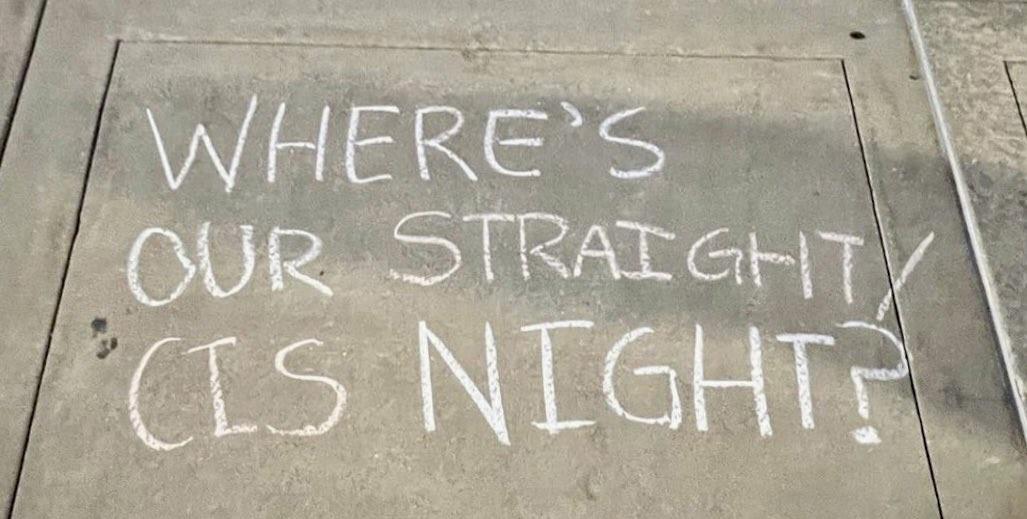 By Madeleine Afonso STAFF WRITER
By Madeleine Afonso STAFF WRITER
The University of WisconsinLa Crosse College Republicans president Megan Pauley resigned last week after photos of chalk ings made by members of the group were posted on social media. The post has since been deleted, as well as the post announcing the resignation.
Four of the chalkings included offensive phrasings, including “Where’s our straight/cis night”
and “Kanye is right deaf-con III” in reference to Kanye West’s recent antisemitic remarks, which had West blocked from Twitter. Remarks on vaccines and gun control were also among the chalkings.
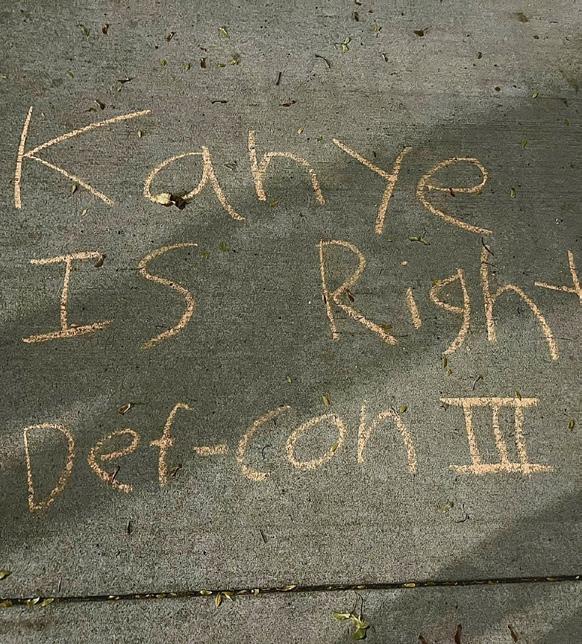
After the original posts were deleted, UW-La Crosse College Democrats responded in a tweet with photos of the four chalkings
“The UWL College Republicans proudly showed o [the] chalking[s] they did on
“[UW-La Crosse’s] leadership team and I are deeply disappointed to see students abandoning civil discourse and engaging in speech that promotes hate, is threatening, or that alludes to violence,” UW-La Crosse Chancellor Joe Row said in the university response.
The College Democrats of Wisconsin tweeted their stance and said, “Hate speech of any kind will not be tolerated and has no place on our campuses and within our society.”
In the tweet, the organiza
The news of these chalk ings comes over a month after UW-Madison’s own instance of graffiti targeting the Jewish campus community.
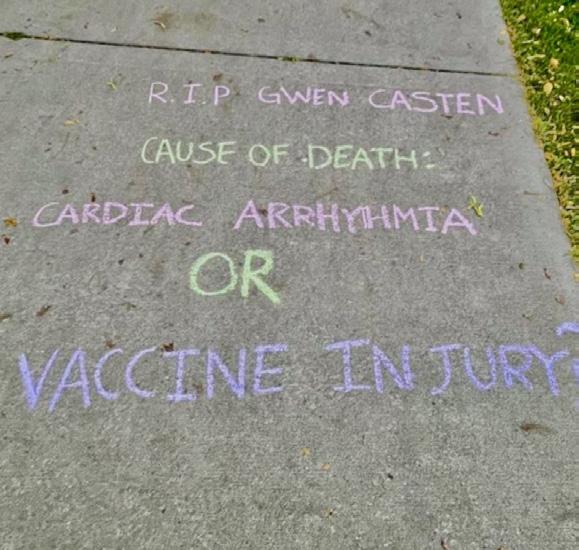
The chalkings labeled Jewish student groups as “racist,” “geno cidal” and “having blood on their hands,” according to a university release. It’s unknown who drew the messages found across campus on the first day of classes.
Chancellor Mnookin said she was “tremendously disappoint ed” to learn of the messages and how it is “critical that we refrain from targeting each other based on identity.”
“…the great state University of Wisconsin should ever encourage that continual and fearless sifting and winnowing by which alone the truth can be found.”
Business and Advertising business@dailycardinal.com
Halloween is always a lively time of year in Madison, and this year is no di erent. We’ve compiled the best activities happening around Madison, from movies to bar crawls.
Downtown Madison is hosting Family Halloween on Oct. 26 at 3 p.m. near the Capitol on State Street. Complete with hayrides around the Capitol Square, a “Kids in the Rotunda” show and trickor-treat with 75 Madison busi nesses, this event will be fun for the whole family.
At 6 p.m. the City of Madison’s
Parks Division is hosting a movie night. Located between Ian’s Pizza and the Veterans Museum on State Street, the city will show the 1993 Halloween comedy “Hocus Pocus”.
At Henry Vilas Zoo on Oct. 29 at 9:30 a.m., Boo at the Zoo returns. This iconic Halloween event is back after three years, and family-friend ly trick-or-treating around the zoo will be sure to delight.
Any golfers are also invited to the Odana Hills Golf Course for their seventh Halloween Tricks and Treats Scramble. The event starts at 10 a.m. on Oct. 29, and four player tickets are available online.
The iconic Nighttime at Schuster’s Farm will take place this Halloween season on Fridays and Saturdays leading up to the holiday — plus Thursday, Oct. 27.
This year will be the 11th pro duction of Screamin’ Acres. Home to four di erent attractions includ ing: Slaughterhaus, Lockup, The Last Resort and Side Effects. Tickets can be purchased online for this popular Friday and Saturday night event.
The fifth annual Halloween Bar Crawl is back this year — and better than ever. Event planners expect over 1000 people to show
up on Oct. 29 to crawl around the exclusive Halloween deals at Red Rock Saloon, Chaser’s 2.0, Danny’s Pub, Hawks Bar and Grill, Kollege Klub, The Double U, Wando’s and Whiskey Jacks Saloon. Check in is from 4 p.m. to -6 p.m. at Red Rock Saloon.
Brats Halloween Spooktacular at State Street Brats will be surefire fun this year, complete with signature drinks, a costume contest and a live DJ. Tickets are $10, and the event will take place Oct. 29 at 10 p.m.
PhD Students are invited to a Costume Party on Oct. 29 at 6 p.m. Located at Capital Brewery, this free event is sure to be a great one.
The U.S. Department of Education officially launched their student loan forgiveness appli cation on Monday, which allows undergraduates and graduates who have taken out federal loans in the past to be eligible for debt relief.
The relief program, which was announced in August 2021, intends to “provide more breathing room to America’s working families as they continue to recover from the strains associated with the COVID-19 pan demic,” according to the White House.
and it is very simple. It’s name, birth date, social security number, email address, phone number and you’re just self certifying that you qualify,” said University of Wisconsin-Madison O ce of Student Financial Aid associ ate director of awards Shane Maloney.
A beta version of the student loan application was released on Friday, allowing those applying for student loan forgiveness to fill out an applica tion prior to the o cial release date.
with federal student loans not held by [Education Department] cannot obtain one-time debt relief by consoli dating those loans into Direct Loans,” stated the U.S. Education Department in a press release.
and asked a federal court to temporar ily halt student debt relief until the court made a full decision.
The Daily Cardinal is a nonproft organization run by its staff members and elected editors. It receives no funds from the university. Operating revenue is generated from advertising and subscription sales.
The Daily Cardinal is published weekdays and distributed at the University of WisconsinMadison and its surrounding community with a circulation of 10,000.
Capital Newspapers, Inc. is the Cardinal’s printer. The Daily Cardinal is printed on recy cled paper. The Cardinal is a member of the Associated Collegiate Press and the Wisconsin Newspaper Association.
All copy, photographs and graphics appear ing in The Daily Cardinal are the sole property of the Cardinal and may not be reproduced without written permission of the editor in chief.
The Daily Cardinal accepts advertising rep resenting a wide range of views. This accep tance does not imply agreement with the views expressed. The Cardinal reserves the right to reject advertisements judged offensive based on imagery, wording or both.
Complaints: News and editorial complaints should be presented to the editor in chief. Business and advertising complaints should be presented to the business manager.
Letters Policy: Letters must be word pro cessed and must include contact information. No anonymous letters will be printed. All letters to the editor will be printed at the discretion of The Daily Cardinal. Letters may be sent to opinion@ dailycardinal.com.
Individual borrowers with fed eral student loans who earned under $125,000 or couples who earned under $250,000 are eligible for up to $10,000 in debt relief, with Pell Grant recipi ents eligible for up to $20,000 in debt relief. Eligibility does not depend on whether borrowers finished their degree or defaulted on their loans, and only loans disbursed before June 30 of this year are eligible for relief.
Current students who filed taxes independently of their parents in 2021 and made less than $150,000 qualify for loan forgiveness. However, eligi bility depends on parental income instead of personal income for stu dents claimed as dependents.
As of Monday, nearly eight mil lion people applied for the relief pro gram, according to the Education Department. Eligible borrowers can apply at studentaid.gov, and the pro cess should take roughly five minutes.
“We looked at it in beta testing on Friday night when it came out,
The beta testing period was imple mented to monitor the site’s perfor mance through real-world application, testing for any possible back-end bugs or crashes prior to the o cial launch, according to Maloney. Those who completed the beta application will not need to reapply later on but have no significant advantage in the appli cation process, according to CNN.
However, a new guidance issued on Sept. 29 changed the eligibil ity qualifications to receive loan forgiveness. Borrowers with fed eral loans owned by a private entity were previously eligible to receive up to $20,000 in loan forgiveness but are now considered ineligible.
Specifically, two main loans fit in this category: Perkins Loans and Federal Family Education Loans (FFEL). These loans are issued and managed by a private bank but guar anteed by the federal government. Prior to the changes, borrowers could consolidate these loans into the Direct Loan Program in order to receive relief, but the Education Department quietly changed that status.
“As of Sept. 29, 2022, borrowers
Multiple experts suspect the Biden administration made the change to avoid legal challenges from private banks, who would lose potential future profits from current borrowers when loans are forgiven through con solidation, according to NPR.
Maloney also believes the Biden Administration made this change to avoid future lawsuits.
“My understanding with what the Biden Administration is doing, is pulling back and saying, ‘Okay, we’re going to get through with what we can get through without challenges, and then we’re going to look back at figuring out how to work this,’ ” Maloney said.
The Biden administration’s debt relief program received a number of lawsuits in an attempt to block the forgiveness program. Six states — Nebraska, Missouri, Arkansas, Iowa, Kansas and South Carolina — jointly filed a lawsuit that argues the forgiveness program is aggressive and unconstitutional.
The Wisconsin Institute for Law & Liberty (WILL) also filed a federal lawsuit challenging the loan forgiveness program on behalf of the Brown County Taxpayers Association (BTCA).
The lawsuit claimed Biden’s execu tive action violated constitutional rights to equal protection under law
“The President has no authority to order a wholesale forgiveness of student loans, costing taxpayers over a trillion dollars. Whether this plan is good for America is for Congress to decide,” WILL president and gen eral counsel Rick Esenberg said in a press release.
The Biden administration’s relief program will cost the federal govern ment roughly $400 billion, which is mainly sourced from taxpayer dollars, according to a Sept. 26 report from the Congressional Budget O ce.
A federal judge denied WILL’s lawsuit on Oct. 6, ruling the orga nization did not demonstrate enough evidence to prove it su ered “irreparable harm” from the debt forgiveness plan, according to the Milwaukee Journal-Sentinel.
In response, WILL filed an emergency motion for injunction on Oct. 11 with the 7th U.S. Circuit Court of Appeals.
WILL filed another motion with the U.S. Supreme Court on Wednesday, asking the Supreme Court to “tempo rarily halt” the program until lower courts decide on its legality. It’s the first legal challenge of student loan for giveness to reach the Supreme Court.
The student loan forgiveness appli cation remains live despite lawsuits. UW-Madison students and alumni can gain additional student loan for giveness resources through the O ce of Financial Aid’s website. The appli cation portal will close on Dec. 31, 2023.
A wrongful death lawsuit was filed Tuesday against Democratic Senate Minority Leader Janet Bewley (D-Mason) following her involvement in a July fatal car accident that killed a five-year-old girl and her mother. Bewley was not injured in the accident.
The lawsuit was filed in Ashland County on behalf of Brandon Fink, the father and husband of the crash victims, Khaleesi Fink and Alyssa Ortman, 27. The defendants include Bewley, a Washburn woman also involved in the accident and three insurance companies. Fink is seeking $10,000 and a jury trial.
“This is a heartbreaking event for the community. Our thoughts and prayers are focused on the individuals involved, their families and their loved ones,” Bewley’s o ce said in a July statement in response to
the accident. “Senator Bewley, who was not seriously injured in the accident, wants to thank all the dedicated law enforcement and emergency medical personnel who helped in the aftermath of the accident.”
The crash occurred in late July on Highway 2. Bewley pulled out of a Lake Superior beach area into Ortman’s car. Ortman’s car then spun across Highway 2 before collid ing with another vehicle. The five-year-old, Khaleesi Fink, was pronounced dead at the scene. Ortman was brought to a nearby hos pital where she later died as a result of the injuries from the accident.
According to an Ashland Police Department crash report, Bewley was dis tracted with her “hands-free mobile phone” during the crash. Bewley was on the phone with a reporting intern for the Milwaukee Journal Sentinel completing a pre-arranged interview at the time of the crash.
The MJS intern said Bewley mentioned
she had eye surgery the day prior. While on the phone with the intern, Bewley was asked by the intern if she was alright after the crash to which she responded “Yeah, I’m OK. This is not a good accident.”
The Ashland Police Department turned over all further investigations regarding the crash to Ashland County District Attorney David Meany. Meany is currently reviewing the reports from the investigation to deter mine if the charges will be filed.
Bewley, 70, has been in the state senate since 2015 and is not seeking re-election this year. She announced this decision in February.“We have not made any changes to our gender services program and stan dard appointments and operations con tinue,” said U this very seriously and is working closely with local law enforce ment to monitor for the safety and security of our patients, providers and staff,” said UW Health.
University Health Services (UHS) will expand their Survivor Services staff and resources in order to meet the growing needs of survivors in the University of WisconsinMadison community.
Prior to the expansion, the Survivor Service team consisted of four mental health professionals and one advocate, but will now nearly triple in size since 2019.
“UHS is recruiting one full-time advocate and recently hired two fulltime mental health providers—includ ing a mental health provider focused on serving survivors of color—to join the current Survivor Services team,” UHS said in a press release.
Survivor Services works to support student survivors of domestic violence, dating vio lence, stalking, sexual assault, harassment and exploitation.
Students are o ered three options through Survivor Services: advocacy, mental health and medical assistance.
Student survivors can receive confi dential, non-clinical support with an advocate at no-cost through the advocacy program. An advocate can provide referrals to accommodations, consultations or any assistance related to the circumstance.
Mental health support is another area of assistance the program o ers.
Students can join support groups facil itated by mental health professionals or meet with the professionals on an individual level.
Those seeking medical assistance can do so through Survivor Services.
UHS’ partnership with DaneMac — an organization that aims to empow er survivors — provides students with numerous services, including emotional support, physical exami nation, collection of any medical forensic evidence, assistance with police reporting, information for
concerns about sexually transmitted infection, pregnancy and any medi cal follow-up plan.
Survivor Services also added an entirely new position to lead the expansion — director of Survivor Services, which will be filled by Molly Caradonna.
According to a press release, Caradonna pushed to add a pilot support group for queer students at the Gender and Sexuality Campus Center (GSCC), which aims to support LGBTQ+ students and their communi ties through education, outreach and advocacy at the university. Caradonna also plans to add a survivor-focused section to the Let’s Talk program. Let’s Talk is another initiative UHS o ers students to obtain informal and con fidential support from mental health services counselors.
“Our team works to support sur vivors in each step of their healing process,” said Caradonna in a press release. “I’m grateful that, with these
program expansions and additional sta , we are able to better serve sur vivors in our campus community. I look forward to continued work with campus partners and student organi zations who share our goal of ending violence and empowering survivors on campus.”
Those who need to contact Survivor Services can do so by calling, emailing or scheduling an appointment through Starfish.
If in immediate danger, UHS urges students to call 911 first. For urgent medical concerns, students are able to speak to a nurse — anonymous ly, if needed — during UHS open hours. Additionally, students can attend drop-in appointments on the sixth floor of East Campus Mall at University Health Services during o ce hours. A crisis line will be avail able for urgent concerns outside of o ce hours.
Sen. Tammy Baldwin visited the University of Wisconsin-Madison campus last Tuesday, calling on students to vote for Democrats in the upcoming midterm elections.

The meeting was hosted by College Democrats as part of a high-traffic canvassing event. Baldwin spoke to about 20 students and discussed the necessity of electing Mandela Barnes to the U.S. Senate as well as the crucial role students would play in such close races across the state.
Baldwin emphasized tight races are the norm in Wisconsin, underlining statewide races, in both presi dential and midterm years, are usually decided by a per centage point.
“Every vote matters,” Baldwin said. “Every vote you can wring out, every vote you can solidify is extremely critical.”
She pointed to the 2020 presidential election when Joe Biden won Wisconsin by fewer than 21,000 votes out of over 3.2 million cast — a 0.62% margin of victory she said came down to “just a couple of votes [President Trump] lost per precinct.”
UW-Madison students “play an enormous role in get ting those votes,” Baldwin said, adding that student turn out can be a determining factor in many races.
“I’m here as living proof of that,” she said. “There’s no way that I would now be a United States Senator if I hadn’t had incredible student turnout in my [previous races].”
Over 24,500 UW-Madison students voted in the 2020 presidential election. In the most recent statewide elec tions, the victor prevailed by roughly the same margin, with Gov. Tony Evers, a Democrat, winning his 2018 race by fewer than 30,000 votes. President Biden won by an even smaller share in 2020. Baldwin said students can help secure victory for Democrats in November.
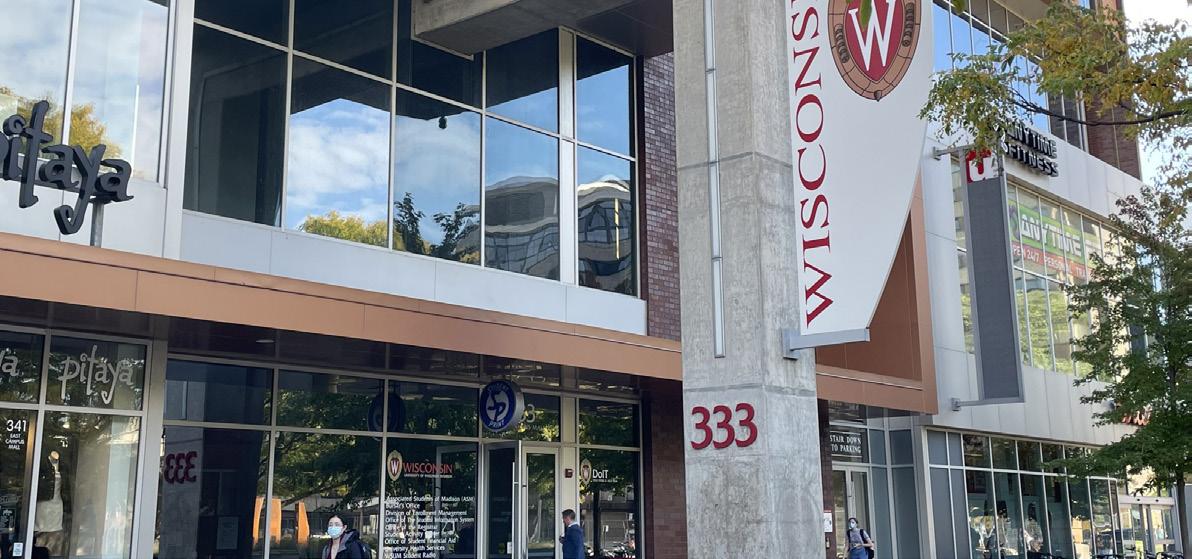
“We can do an incredible turnout push on this cam pus and really deliver for Tony Evers, Sarah Rodriguez, Josh Kaul [and] Mark Pocan,” Baldwin said, noting the Democratic candidates for governor, lieutenant governor, attorney general and representative.
She acknowledged recent attempts by Republican law makers to restrict access to the ballot box may have caused confusion among students, but asserted people “just have to have a plan.”
Baldwin also touched on the necessity of replacing Wisconsin Sen. Ron Johnson, who she called her “polar opposite.” A Republican, Johnson has made headlines for embracing conspiracy theories and voting in opposition of Baldwin more than any other pair of senators from the same state.
“Basically, when I’m fighting for you, and casting votes, [Johnson’s] usually canceling the vote out,” Baldwin said. “I believe that we need two senators fighting for us.”
The U.S. Senate is currently split, with Democrats and Republicans each holding 50 seats. The Democrats have the majority and have been able to pass some legislation
because of the tie-breaking powers of Vice President Kamala Harris, but the filibuster, a Senate rule that requires 60 votes for the passage of many laws, has sty mied much of their agenda.
“I think about our need to take serious actions on criminal justice reform,” Baldwin said. “I think about our need to take serious actions on immigration policy. I think about so many things that have been out of reach because of the filibuster. We need two more Democrats.”
One of the items currently stalled is the Women’s Health Protection Act — co-authored by Baldwin — which would restore Roe. v Wade and prevent states from passing laws that further restrict reproductive freedoms. She said the bill only has 48 supporters, all Democrats — two short of the 50 it would need to pass.
“If we had two more Democrats in the U.S. Senate who were willing to both reform the filibuster and pass the Women’s Health Protection Act (WHPA), we could, in short order, restore full freedoms to half of all Americans,” she emphasized.
Baldwin drew a stark contrast between Johnson — who celebrated the overturn of Roe v. Wade and opposes the WHPA — and Barnes, who is pro-choice and believes passing WHPA is necessary to protect reproductive rights.
“Send me a partner who’s working for you,” Baldwin pleaded, encouraging students to vote for Barnes.
Baldwin also urged students to re-elect Gov. Evers, who she said was in the unfortunate situation of dealing with a “MAGA Republican” controlled state legislature. The Legislature has sent Evers bills restricting women’s right to choose, ballot access and “all sorts of things that would be harmful to Wisconsin and set us back,” Baldwin said.
She highlighted Evers has been vetoing these laws but Republican candidate for governor Tim Michels would sign them into law.
“We would live in a very di erent state if that were to be the case,” Baldwin said. “So we need him for his veto [and] the fact that he would fill any vacancies on our state Supreme Court or fill any vacancies in our local courts, and that makes a huge di erence.”
Baldwin also characterized Evers’ re-election as one that would save Wisconsin from losing its reputation.
“We need him to send a message that Wisconsin is not lost,” Baldwin said, adding that the direction of the State Legislature had already portrayed the state nega tively to the rest of the country. “We want students [to keep] wanting to come to Wisconsin to get their higher education at this super university. But I think people do look at the political climate of communities when they’re thinking about where they want to live for a period of time or forever.”
She urged students to volunteer between now and the election “like your rights depend on it — because they do.”
Baldwin then opened up the floor to questions. When asked about her most impactful accomplishment in Congress, Baldwin said it was when she authored an
amendment to the A ordable Care Act in 2010 which allowed young people to stay on their parents’ health insurance until they are 26. She asked the assembled stu dents if they were on their parents’ health insurance, and everyone raised their hands.
“That always makes me want to cry,” Baldwin said, say ing she was proud she could get the amendment through.
Baldwin also pointed to her e orts in leading the Respect for Marriage Act (RFMA). The act, which she coauthored, would provide legal protections for same-sex marriage and interracial marriage.
The RFMA was prompted by Dobbs v. Jackson, the Supreme Court decision that overturned Roe v. Wade. Dobbs threatened the constitutional right to privacy that provided the basis for past marriage equality rulings in the past, and a concurring opinion from Justice Clarence Thomas revealed his dissatisfaction with those rulings, raising concerns the legality of same-sex marriage was at risk.
Baldwin, the first openly lesbian woman to be elected to the House and the Senate, said she had heard from countless people who were worried their marriages would soon be invalidated or not possible. The RFMA passed in the House with bipartisan support, but Senate leadership delayed the bill until after the midterm elections once it appeared it lacked the necessary Republican votes.
Johnson initially signaled he would vote for the bill before backtracking weeks later, telling reporters he didn’t think the bill was necessary. In an interview, Baldwin said she still hopes Johnson would “flip-flop a couple more times” and end up supporting the bill, though she indi cated during the event the bill has enough votes.
“In order to pass [the Respect for Marriage Act] and overcome the filibuster, we need 60 votes,” Baldwin said. “And I think I have more than 60 now. We have all the Democrats, and I think we have over 10 Republicans and so hopefully, before the end of the year, after the midterms, we’ll have a vote and codify marriage equality.”
 By LiLi Bicoy STAFF WRITER
By LiLi Bicoy STAFF WRITER
As the concept of free col lege is quickly shifting from a radical stance to a com mon theme in our political world, America’s youth have been strong entertainers of the push for a fully tax-fund ed higher education. Such a belief often originates from an infrastructure of ethics or per sonal anecdotes, all of which should be good enough reason in themselves.
However, an argument can be made that without full gov ernment assistance for college students the nation will fall short of its accomplishments of the past, thus catering to the federal government’s economic and growth-centric ideals.
Going back in history to one of the nation’s most prominent initiatives for free college, the Servicemen’s Readjustment Act of 1944, the bill created an opportunity for a gratuitous higher-education that a ected American society economically, socially and educationally.
The act, commonly known as the G.I. Bill, provided several resources and aid which helped World War II veterans reinte grate back into society.
By allowing optimal condi tions, the integration of these servicemen served not only themselves and their families, but also the health of the econo
my. According to the American Quarterly, the act was able to limit an overflow of unemploy ment by providing outright free tuition for veterans.
To put into perspective how effective this act was in terms of education, the National Archives recounted the con tent of the act and found 2.3 million eligible veterans would go on to attend a uni versity or college, and 3.5 mil lion would attend training in a school setting. Further, this new wave of students largely succeeded in college, as the number of received degrees more than doubled after the G.I. Bill was passed. A study by Fortune collected data from university professors at the time and claimed the class of 1949 was “the best class the country has ever produced.”
Furthermore, while the original G.I. Bill expired in 1956, the e ects of this act were not bound to the few years of its existence, but rather had last ing e ects for several decades. This is because of how welleducated the workforce in the nation had become.
Generally speaking, collegeeducated people have a better chance at making life-altering discoveries which can help improve society economically, socially and patriotically. So, it shouldn’t come as a surprise that in a timeline compiled by
the University of Chicago, the late 1940s to the early 1980s were outputting a hotbed of advancement. From Jonas Salk and the Polio vaccine to Edward Lorenz and the but terfly e ect — educated minds in America were thriving.
Although, the G.I. Bill can be applied more directly. The Space Race, one of the largest united goals of the nation through sci ence and government, occurred during this era of improvement. Contributing greatly to this his torial American moment was
William E. Price, a veteran from World War II. When interviewed by American Legion, Price said, “I entered college in 1947 with my tuition and books paid for by the G.I. Bill.” He would later go on to play a fundamental part in engineering NASA’s spacecrafts, including Voyager 1 and 2. The question remains, would this have been possible for Price without a free college education?
Now more than ever, the youth of America need their college tuition to be paid for. Yet, this is not a one-sided deal. Rather,
this is the government investing money into its own future: a selffulfilling prophecy.
To see improvement, the nation can use a method that has been shown to work in the past, and let the American youth do the rest.
LiLi Bicoy is a fresh man staff writer studying Journalism. Do you believe our nation needs more college educated workers to ensure a successfulfutureforAmerican society? Send all comments to opinion@dailycardinal.com
Static overtakes the channel as the pilots adjust their fre quency, “Foreign military air planes, you are approaching my military secure area, please go away quickly in order to avoid wrong judgment.”
Silence prevails for a brief moment with a mix of call signs and designations being spewed over the radio. Finally, a pilot responds, “Station calling U.S. military aircraft please identify yourself. I am a United States military air craft conducting lawful mili tary activities outside national airspace. I am operating with due regard as required under international law.”
The static continues, and the Chinese officer contin ues to recite his callsigns and designation before providing a manufactured and tactical reply: “This is Chinese Navy. This is Chinese Navy. This is Chinese sky. Foreign military airplane, you are approaching my military secure area please go away quickly in order to avoid wrong judgment.”
While the eight minute audio log is over seven years old, the documented interac tion between the crew of a U.S. Navy P-8A Poseidon and the captain of a Chinese Naval vessel echoes an everlasting geopolitical struggle between the two nations in the waters surrounding China.
The Taiwan Strait in the
South China Sea has been at the epicenter of this “passive” conflict, with near midair col lisions, flybys and freedom of navigation operations accentu ating the collective tension.
In August, China restated its willingness to annex Taiwan by force and halted discourse with the U.S. in response to Speaker of the House Nancy Pelosi’s visit to the island nation. This moment, while being consid ered the relative climax of the conflict, is demonstrative of China’s lack of commitment to the conflict — and enforcing its rule of law in what it believes to be its sovereign territory.
Although, China will not invade Taiwan. It lacks both the will or means to do so.
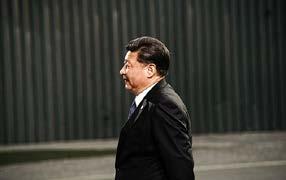
Speaker Pelosi’s visit to Taiwan made her the highestranking American official to visit the island in 25 years, representing an unspoken American acknowledgement of Taiwan’s soverignty. While China lays claim to the island and deems it to be included in its territory, they took no deci sive action to counteract U.S. diplomatic encroachment.
In the following weeks U.S. warships continued to conduct freedom of navigation opera tions through the Taiwan strait with no contest. China contin ues to assert its claim to the South China sea despite a 2016 ruling by an Arbitral Tribunal that rejected China’s “expan sive” claims as having no prec edent in international law. The
ruling was binding and final, and has never been accepted by the Chinese government.
In the context of this ruling, and the lack of definitive action by the Chinese government to enforce its supposed sovereign territory, there is no evidence to indicate China is committed to a kinetic operation to overtake the island.
Could Taiwan be the next Hong Kong?
One might point to China’s establishment of Hong Kong as a special administrative region (SAR) of China as an example of their goals for Taiwan, where political violence plagued the SAR. From an outside view, Xi Jinping and his government seem ready to utilize these same measures. However, the police on the ground attack ing protestors was a successful show of strength which is not possible in Taiwan without a Chinese invasion.
Yet, several factors permitted China to overtake Hong Kong in a relatively painless sweep.
Hong Kong was contractu ally linked to China in lieu of Great Britain’s dissolution of it as a colony. China only needed to wait 50 years after the 1984 Sino-British joint declaration to integrate Hong Kong back into the central government. While China did encroach on this directive by taking over Hong Kong earlier than agreed upon, this could be considered an inevitability in the wake of its expansion as an economic
power seeking to stake its claim to its entire land mass.
Furthermore, the lack of a clear geographical boundary between China and Hong Kong, aside from the Sham Chun river, allows an extensive projection of force for China to overtake it. This single geographic dif ference may be the key to why China has taken Hong Kong but will never take Taiwan.
The separation between the two countries would require an amphibious operation which China has no experience in exe cuting. However, the mobiliza tion of resources and the sus tained effort required to take Taiwan by force would strain China’s People’s Liberation Army (PLA) into a fight they are not prepared to win.
The PLA as a whole main tains a spotty track record in many of its foreign endeav ors. The PLA’s support base in Djibouti represents China’s
premier force projection abroad. While the base plays into the country’s economic and political agenda in Africa, they lack any definitive control in the region.
Given this evidence, it would be reckless of the international community to assume China is in any position to execute a kinetic operation to truly establish its claims to the South China Sea and Taiwan.
China is not a genuinely aggressive actor looking to envelope the region by force. Instead, it’s a rising power seek ing to reinforce its prestige and establish itself as an unyielding actor that will not bend to the pressures of the West.
Edward Habboosh is a freshman staff writer study ing History. Do you believe the tensions between China and Taiwan will result in an inva sion? Send all comments to opinion@dailycardinal.com.
COURTESY OF COP PARIS VIA WIKIMEDIA COURTESY OF ALMOSTSUMMERSKY VIA CREATIVE COMMONS By Jackson Baldus STAFF WRITER
By Jackson Baldus STAFF WRITER
The fact that Slow Pulp and Alvvays’ concert occurred as planned is remarkable, consid ering the bands faced an acci dent on the way to Madison and a last-minute venue change because of the weather. The show was planned to take place on the Terrace, but was moved indoors to Shannon Hall. Understandably, the performance started an hour late, yet the bands were still determined to deliver a topnotch performance despite the unfortunate circumstances around their first tour stop.
After waiting outside in the cold, fans shuffled in – a fittingly indie crowd clad in rolled-up beanies, turtlenecks and Dr. Martens. Despite Wisconsin’s chilly fall weath er, they chatted enthusiastical ly in anticipation for the show.
Slow Pulp took the stage to a warm welcome from the crowd. The band is now based in Chicago but began right here in Madison. It was a homecom ing for them, and bittersweet emotions were visible on all of the musician’s faces.
Slow Pulp’s setlist was brief but featured every facet of their sound. They opened with “Idaho,” the biggest hit from their latest album, “Moveys.” Their tunes were emblematic of the wistful, contemplative dream pop Slow Pulp does best. They managed to ramp up the energy with each con secutive song, working in some thrash-worthy guitar
solos from Henry Stoehr that surprisingly meshed well with lighthearted vocals.
The energy peaked when Slow Pulp pulled out “High,” an anthem for anyone who had a date with Mary Jane go south. The track’s driving chorus caused everyone in the audience to switch from sway ing to headbanging.
The crowd had a chance to perform, singing “Happy Birthday” to lead singer and guitarist Emily Massey, who was grateful for the rendition on her special day. Finally, Slow Pulp said goodbye with “Montana.” Massey incor
porated a soulful harmonica solo into the song’s finale that amplified its melancholy mood.
After a brief intermission, the six members of Alvvays filed onto the stage to an ethe real audio introduction con sisting of echoed chanting behind a rolling electronic buzz. The band subtly mixed their guitars into the synths’ sound to transition to their opener, “Pharmacist.” The chorus featured background vocal echoes reminiscent of the introduction, and they blend ed perfectly with lead singer Molly Rankin’s voice, creating a delightfully hypnotic effect.
Alvvays continued to play some fresh cuts from their new album, “Blue Rev,” which was released only a week ago. Most notable was “After the Earthquake,” an upbeat tune with fun 1980s alternative rock guitar passages that were steeped in nostalgia. “Very Online Guy” was a crowd favor ite — surprising considering its departure from the band’s typi cal sound. Synthesizers were incorporated heavily in its per formance, driving the mono tone chorus in this DEVOesque electronic banger.
With new stuff out of the way, Alvvays returned to their
well-known hits – the first of which was “Adult Diversion,” which reinvigorated fans with its infectious, blissful melody. “Archie, Marry Me” and “Dreams Tonite” were, of course, major highlights of the night, and had fans singing along like no one was watching. The final number of the night was “Easy on Your Own?” The opening lyrics of the song, “I dropped out, college educa tion’s a dull knife,” connected with a crowd of Badgers strug gling through a brutal midterm exam season. After chants of “One more song!” Alvvays was welcomed back to the stage to deliver the encore, “Saved by a Waif,” a danceable send-o that was carried by Molly Rankin’s impressive range.
Alvvays’ music was sup ported by visuals projected behind the band, which con sisted of low-resolution colorful abstractions and surreal shots of flowers that looked like pop art created by a VCR player. The visuals were more engaging to watch than the musicians them selves at times, as their stage presence and crowd interac tions were somewhat lackluster.
The Thursday night show marked an end to the 2022 con cert season at Memorial Union and a beginning to Alvvays’ and Slow Pulp’s long-anticipated fall tour. The bands are head ing to the East Coast next, with upcoming dates in Washington, Oregon and California. Be sure to support these groups if you’re in search of thoughtfully crafted dream pop to inspire you.
If you’ve ever thrifted clothes, have you ever won dered where that piece of cloth ing came from?
Every object we see has its own story. Whether it’s the chair you used in the library or the current house you’re living in, there’s a hidden history to that object that it is incapable of telling on its own.
Located right on cam pus in Nancy Nicholas Hall, “Questioning Things” urges its viewers to dig a little bit deeper into these stories and histories of “things.”
The exhibit was inspired by now retired founding Faculty Director of Material Culture Ann Smart Martin and was curated by Executive Director of the Center for Design and Material Culture Sarah Anne Carter with a vision to inspire curiosity in the world of objects.
With the help of UW Material Culture Studies gradu ate students, the exhibit houses
around 76 objects with some dating all the way back to the 1800s. Visitors gain a true understanding of the impor tance of material culture from this vast collection of “things” sourced through collaboration with local, state and private col lectors — with some being from the Chipstone Foundation and the Chazen Museum of Art.
“Material culture is the study of the material traces from the past,” Carter explained. “So, instead of understanding his tory from a book or a docu ment, you can understand history from an 18th century waistcoat and all of the sys tems that went into creating it: where did the fabric and design come from, what kind of body wore this, and even how much did this cost.”
As you walk through the exhibit, you’ll find di erent sec tions of objects housing groups of highly diverse objects that are seemingly alike. This was the vision Carter worked to create: how commonly used objects —
like a chair — serve the same purpose, but can have infinite unique variations.
“We have a number of histor ic chairs that are reproductions. One of the chairs is a repro duction by John Hemmings who was enslaved by Thomas Je erson in the early 19th centu ry. If you lean back, it’s sort of a round chair, and this was made for Je erson, but was also for his arthritis because he had a lot of pain and that chair would make him more comfortable,” Carter noted.
The exhibit as a whole is deliberately presented to ensure these carefully selected items add up to an experience more than their individual sum. This is evident in how, upon entering, visitors are immediately provid ed a handbook. The handbook contains the map of “things” along with interactive activities you can complete as you walk through the exhibit.
“In the handbook, there’s a place where you can take notes, you can sketch, and it’s inviting
more interaction,” Carter said.
In addition to the handbook, the labels on each object came from di erent perspectives.
“Rather than have it be in my voice as the curator, we decided to have as many voices as pos sible,” Carter added. “Every object in this exhibit has a label that was written by someone who is connected to the material culture program.”
Interaction is one of the main factors of the exhibit. Some dis plays contained drawers visitors could pull out and look at, while others had interactive objects like — my favorite part — the chair park. The chair park con tains nine chairs, where visitors can sit and read about the his tory of the chairs.
“We were interested in giv ing people di erent types of experiences,” said Carter. “As you move through the space, you can think about what kind of chair you might want to sit in, what words you think about when you’re in the chair, how it feels or which chair you like.
Just to start thinking di erently and engaging with the space.”
Sitting behind the chair park is a wall of polaroid pictures. The polaroid cameras, which sit near the shelf, can be used to create a collage of images while encouraging visitors to question the influence polaroid cameras played in photography.
“The idea is that you come back, try a chair, and take a pic ture with a friend or in a group. As it develops, you’re sort of just waiting around. Again, it’s another strategy to invite peo ple to be present and experi ence the exhibit to look around in and not just rush through,” Carter explained.
The exhibit houses an amaz ing number of modern and his torical everyday objects that are presented with a sense of fun, playful innocence you may not expect. “Questioning Things” will remain open in Nancy Nicholas Hall until Nov. 20. I highly advise taking the time to look, and maybe even question some “things.”
House Speaker Nancy Pelosi made headlines on Oct. 18 when she was quoted saying she doesn’t regret a comment she made against then-president Donald Trump following the Jan. 6, 2021 insur rection. The longtime California Representative came under fire for saying she would “happily” go to jail if given the opportunity to punch Trump.
Following the comments being brought back to light, internet sleuths discovered old footage in which Pelosi makes similarly dis paraging remarks about Mother Teresa, a former nun and literal saint, dating back to 1991.
Holding a Budweiser in her left hand and gesturing with a Virginia Slim in her right, the then fourthyear representative can be seen venting to a colleague.
“I’ve spent time with Mother
Teresa without the cameras — she’s a real mega bitch. And now they’re saying she has pneumonia? Cry me the Jordan River. I’ll punch her raggedy right tit if that’s the side her weaker lung is on,” said Pelosi before taking a thick drag.
Pelosi was approached about the unearthed comment as she was leaving the House on Tuesday night. Ironically, the Washington veteran didn’t pull any punches.
“Her again? God, I thought we handed her over to the worms in ‘97. I’ll tell you right now — if I could get my hands on that corpse, I’d ream her so bad she’d be sent to a layer of Hell that Satan himself hasn’t visited since the eighties,” said the grand mother of nine.
Though commonly considered one of the most devout and holy people who has ever lived, she is not without her controversies. This included supposedly not pro viding appropriate medical care
and making positive comments about dangerous political figures. However, this does not explain Pelosi’s gripe.
“Allowing sick people to su er without proper medical care and cozying up to Haitian dictators? Big whoop — we call that a Thursday in D.C. I just never liked the harlot,
During this past week end’s Wisconsin Badgers football game, TV specta tors saw a brand new ad out of Ron Johnson’s reelection campaign: one claiming Mandela Barnes plans to personally stab every Wisconsinite 17 times in the chest.
“Do you want to die?
Well, Mandela Hussein Barnes wants you to die,” claims the advertisement.
“The first item on his radical liberal agenda is personally stabbing every Wisconsin resident 17 times in the chest.
Protect your family from being stabbed by Mandela Hussein Barnes by voting for Ron Johnson — he won’t stab you 17 times in the chest.”
The commercial con
cludes with Johnson add ing, “I’m Ron Johnson and I approve this message.”
After much buzz stirred demanding the Johnson campaign revoke the ad, they released the statement, “We will not be silenced by the fake news radical lib eral media trying to steal the election and cancel us for wanting to secure the safety of our beautiful, Christian Wisconsin children from being stabbed 17 times in the chest by Hussein Barnes who was born in Mozambique and wants antifa to George Floyd 9/11 every small town in Wisconsin.”
The Barnes campaign’s o cial statement on the matter reads, “We want this race to be one built on discussion of policies that will help the citizens of
Wisconsin and are disap pointed to see such nega tivity from Senator Ron Johnson. As such, we polite ly request they take down the ad stating Mandela Barnes will stab every resident of this beautiful state 17 times in the chest.
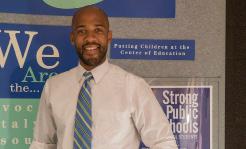
Despite Ron Johnson’s role in the attempt to overturn the 2020 presidential elec tion and his use of classi fied government informa tion to increase his personal wealth, we have run zero negative ads against him because when election day comes, we know the great people of Wisconsin will vote with kindness.”
FiveThirtyEight’s com pilation of the latest polls as of Oct. 1 shows Johnson leading Barnes by almost two points.
plain and simple. I can’t trust a woman who’s never fogged up the windows from the backseat of a 1957 Bel-Air.”
While Pelosi has long been treat ed as a scapegoat for what’s wrong with politics in Washington, she has not let polling get in the way of her beliefs. Despite this, she attempted
to give a more family-friendly expla nation on-air with CNN.
“We had our first Catholic presi dent, Kennedy, in 1961. We elected our second Catholic president, Biden, in 2020. There’s decades of gray area in there. If a nun gets to act like a nasty prude, then I get to act like a nasty woman,” said Pelosi, seemingly making a point of cater ing to Hillary Clinton’s 2016 cam paign supporters.
Though no more evidence of Pelosi making similar comments about a third high-profile figure have been found, unconfirmed reports say she has also gone on rants involving celebrities includ ing former representative Bob Dole, Philadelphia Flyers Mascot “Gritty” and Mark Wahlberg.
Further coverage of the develop ments can likely be found on Pelosi’s rumored-to-be-in- development political talk show in collaboration with the WWE Network.
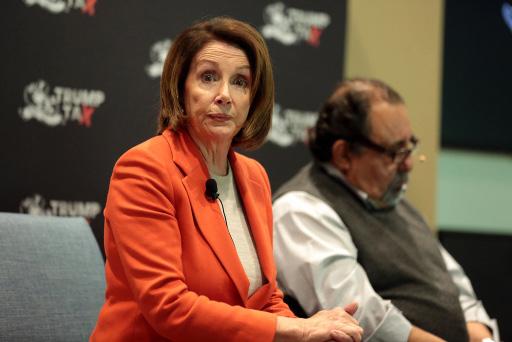
It’s one of the most classic examples of good samaritan ism there is — driving along, noticing a turtle in the road, and pulling over to move it back to safety.
Now, questions are being raised about what kind of life the so-called do-gooders are returning the reptiles to. The picture painted by The Man™ would indicate turtles are being returned to a life of sitting on a marshy log eating worms all day. Unfortunately, this is not always the case, such as that of Reginald P. Schmidt — a 15-year-old tortoise from Merrimac, Wisconsin.
The instant thought may be that Reginald — known to some as Reggie — is sim ply experiencing a midlife crisis. However, the suicidal turtle does not have any of the ties that most due when this occurs.
“The whole wife and kids thing was just never for me. I had some young loves as a hatchling and went steady with a fine gal from across the creek, but I could never commit. There were other things — hob bies, friends, a brief stint in Florida — I did alright,” smiled Schmidt with his pointy, scary mouth.
Reginald, who is unem ployed because of the tech nicality that he’s a reptile, has been trying to get run over by a car since June 2022. Four months in, he’s had no luck. Though Schmidt says
he understands why people are removing him from the middle of the backroad, he wishes they would just let nature take its course.
“I know it’s not the popu lar thing to think, but if you’re an animal and you’re in the road, you have made the decision that you are at peace with death,” said Schmidt.
The issue has escalated to the point where Reginald is looking into other methods of suicide.
“I’ve been doing a bit of detective work, and su o cating on plastic six-pack beverage rings seems like a pretty popular route. Problem is, people around here buy Busch Light in racks of 30, so I’ve only got access to cans and boxes,” said the snapping turtle.
The omnivore noted he could cut the can open on a rock or sharp stick and use the sharp aluminum to draw blood, but he opted against it.
“What kind of schlub would I be if I left a whole mess like that? I want a clean exit,” he lamented.
Though Schmidt recog
nizes getting run over by a heavy vehicle isn’t exactly Mr. Clean approved, he says the entertainment value of the explosion would make it worth it, comparing the scene to “a broken piñata full of organs.”
Schmidt is just one exam ple of rising concerns over the legality — or lack thereof — of turtle assisted suicide.
“It’s a fair criticism — a safe and smart route for tur tles to receive assisted sui cide is is not covered in the Wisconsin Constitution. What I can tell you is that an issue concerning a sui cidal snapping turtle is exactly the kind of situation the legislature would prior itize,” said Representative Mark Pocan.
As of now, Reginald P. Schmidt stands to live anoth er day. Though the turtle will have to bide his time until his hard candy shell shatters under the weight of a Nissan Altima, he can patiently wait knowing he is already sin gle-handedly contributing to the pro-turtle endanger ment movement.

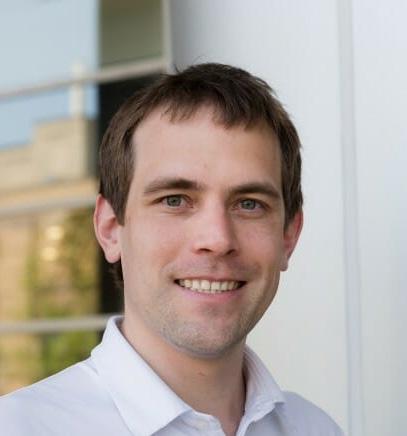 By Julia Wiessing SCIENCE EDITOR
By Julia Wiessing SCIENCE EDITOR
Many innovations and breakthroughs on the University of WisconsinMadison campus are fueled by generations of undergradu ate research assistants. Doing research as an undergraduate can boost your resume, help shape your future career and bring you in contact with life long connections. One of the most common ways of find ing a research position is by cold emailing — emailing a professor or researcher you’ve never met before — and asking for an opportunity. However, cold emails are intimidating to send and difficult to for mulate. Here are a few tips for sending a successful email and landing a research opportu nity on campus.
Before starting your cold email, do your research. First, identify what you want to do. Are you someone who wants to work in the field in far o places? Or, are you looking to learn more skills at the lab bench? Either way, find a lab that matches your interests and goals. Your department’s home page is a good place to start.

Once you’ve identified a lab you find interesting, identify the principal investigator (PI) and current graduate students, and learn more about their research. While a lab may have similar overarching goals, indi vidual people will be working on a variety of projects with a variety of needs. Read the most recent publications from the lab and listen to talks from lab members. Having knowledge and a good foundation will help you formulate a strong cold email.
PIs and graduate students are very, very busy. While you may be tempted to explain your entire background and breadth of scientific interest, a cold email is not a resume nor a cover letter. Instead, focus on the most important and persuasive information. Start by introducing yourself and stating why you’re contacting them — there’s no need to beat around the bush. Tell them why you’re interested in their lab, citing specific projects or publications. Don’t just sum marize their website or main lab tenants, try to incorpo rate specific details you found interesting. A strong candi
date will appear interested and motivated. Being able to show this in a concise way will set you up for success.
PIs and graduate students are human like the rest of us, and receive a lot of emails. If your contactee hasn’t responded to your email after a few days or a week, send a short but polite follow up. You may have to send multiple follow up emails, but remain patient. Your contactee will eventually respond — it may just take a few reminders to get the reply you’re looking for.
The first cold email you send may not land you the internship or research oppor tunity you wanted. But, each cold email is a connection to a new professor, researcher or graduate student. It may feel disheartening when a lab can not take you on as an intern, but it may open up new oppor tunities in the future.
Keep sending those emails. Eventually you will find a lab that fits, joining other researchers in pursuing the Wisconsin Idea.
By Julia Wiessing SCIENCE EDITORMarcel Schreir, the Richard H. Soit Assistant Professor in chemical and biological engineering at the University of WisconsinMadison, was named a Packard Fellow for Science and Engineering on Tuesday.
The Packard Fellowship, funded by the David and Lucile Packard Foundation, is given to early-career sci entists and engineers pur suing innovative high risk, high reward research.

Schreir’s lab focuses on electrocatalysis — develop ing methods to transform chemicals using electric ity. The lab’s research often occurs at the molecular level, examining the elec trochemical interface. The electrochemical interface is a key part in electrocatalysis, as it mediates the strength between key intermediates in a chemical reaction and the surface of an electrode. This interface generates an elec trical field gradient, allowing researchers to manipulate the reaction. Schreir’s work
seeks to tune the properties of the interface in order to create beneficial reactions. These methods may be par ticularly useful in the chemi cal industry, replacing fossil fuels with renewable energy.
“The chemical industry makes everything that sur rounds us — paints, lubricants, coatings, plastics,” Schreir said in a university release. “All these chemical products are being produced currently by fossil fuels. At the same time, we have an increasing amount of renewable energy in the form of electricity.”
Schreir’s research is con tributing to a carbon neu tral future of the chemical industry, where the indus try can rely on renewable energy instead of fossil fuels. The lab group will receive $857,000 over five years.
Schreir hopes to expand his lab, purchase new equip ment and continue support ing his students’ work.
“The key benefit is that it will give our lab the flex ibility to really explore our ideas,” said Schreir. “It’s an honor for our entire group.”
With the Wisconsin Badgers’ season nearing its opener, there are still plenty of unanswered questions for Greg Gard and his staff. A major question is who is going to step up and fill the holes left by key players like guards Johnny Davis and Brad Davidson.
Luckily for Wisconsin, there are still a plethora of talented, unproven Badgers who now have the opportunity to step into greater roles. If Wisconsin hopes to build on last year’s momen tum, they will need help from some lesser-known contributors.
The first player to watch heading into the 2022-23 season is Kamari McGee, a sophomore guard transfer from the University of Wisconsin-Green Bay. McGee’s quickness o the dribble and abil ity to score at all three levels is going to be crucial as the Badgers try to fill the NBA sized gap that Davis has left behind.
At Green Bay, the point guard averaged a team high 11.6 points and 1.9 assists on the season, with 17.6 points on 50.7% FG in his last five games to end the season. These stats earned him a selection to the Horizon League’s all-freshman team.
An important aspect of McGee’s game, and one of the reasons he is a major key to Wisconsin, is his ability on both ends of the court. The guard’s 1.1 steals and stellar on-ball defense is going to be key to the Badgers finding rhythm in the backcourt.
If the Badgers want to come close to last year’s results, they will need McGee to step in and make an impact.
The next Badger to keep an eye on heading to the season is Max Klesmit. Klesmit is a junior guard transfer from Wofford College. Coming from Wofford as one of their leading scorers, Klesmit was a dependable player the Terriers could turn to when their offense wasn’t clicking.
Klesmit is the type of player who’s always willing to shoot –and for good reason. He was the team’s second leading scorer at
14.9 points per game with a 44.6% field goal percentage. A bulk of those points came from his 68 three pointers, shooting at 34% from beyond the arc.
The public got to see the junior guard play in Badger red for the first time during Sunday’s Red-White Scrimmage. Klesmit did not disappoint, leading the team with 17 points — nine of which came from beyond the arc. Showing no nerves, Klesmit came out ready to prove he is here for a reason.
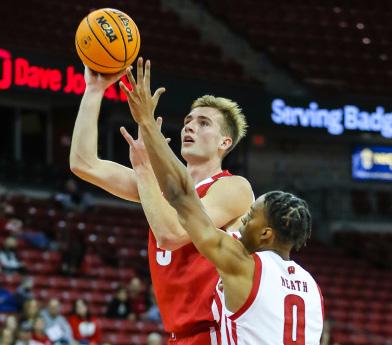
It will be a fun year for Badger fans to watch him play off of McGee and Chucky Hepburn in the backcourt withTyler Wahl and Steven Crowl in the front court – if Klesmit is moved down to the three spot as expected.
Tyler Wahl is a player the Badgers need to have step up and come into his own if they want to accomplish their goals this season.
Last season, the senior forward averaged 11.4 points per game, playing an average of 30 minutes a night. Wahl showed flashes of the two-way star he has the potential to be but lacked the consistency necessary to make that leap.
Entering his senior season without Johnny Davis, there is hope he is the next Badger to step up and fill that go-to scoring role. Although it would be nice for Wahl to make a Davis-type leap in production, that seems unlike ly, as his slow play style leaves a lot to be desired when comparing his production to Davis’.
The season is not fully dependent on Wahl’s stardom. However, a stable scorer that can be a presence in the paint on both ends would pay dividends for the success of the Badgers this year. Having Wahl as a force inside can completely open up Wisconsin’s offense.
Wahl serving as an asset for guards like Hepburn, McGee and Klesmit is huge, especially when shots aren’t falling and the o ense needs a spark. Wahl has been the poster boy of mediocrity throughout his Badger career, and this season will provide a golden opportunity to step into a bigger role and be the di erence-maker for Wisconsin.

The warning sirens are blar ing in Madison after Wisconsin (0-4-0, 0-2-0 Big Ten) sustained a series loss to No. 10 St. Cloud State (4-0-0, 0-0-0), thus begin ning their season 0-4 for just the third time in 60 years.
The Badgers dug themselves a second period hole they never climbed out of on Friday night, losing their home opener at the Kohl Center, 5-1.
Tensions began to rise early on in the contest after UW fresh man Jack Horbach was assessed a charging penalty at 1:31 in the first period. St. Cloud State’s Brady Ziemer didn’t take kindly to the offense, retaliating with a cross-check into Horbach’s back. Several light pushes ensued – to the pleasure of the 7,030 in atten dance – before the pair were separated and ushered to their respective penalty boxes.
The Badgers would once again find themselves in pen alty trouble as the period drew to a close. With 55.6 seconds left in the first, sophomore Corson Ceulemans was called for hooking and sent to the box for two minutes. The defense man did little to hide his frus tration, firing the puck down the ice and exchanging words with the officials – earning himself an additional 10 min ute misconduct penalty.
“It wasn’t a performance that we’re looking for out of a player like him or any player,” Badgers coach Tony Granato said of Ceulemans, a 2021 first-round draft pick of the Columbus Blue Jackets.
Wisconsin skated off the ice in good spirits after the scoreless first period in which they out shot St. Cloud State 12-7. Those positive feelings quickly dissi pated minutes into the second.
With 16:04 left in the sec ond period, SCSU’s Grant Cruikshank – who decommitted from Wisconsin in 2017 – bur ied the first goal of the game to break the scoring drought and put the Huskies up, 1-0. After teammate Micah Miller’s wraparound shot flew through the crease, Cruikshank handled the puck on the far side and ripped it over the shoulder of UW goalie Jared Moe for his second goal of the season.
The Badgers allowed sever al golden opportunities to slip through their hands in the ensu ing minutes of the second, as forwards Carson Bantle, Liam Malmquist and Sam Stange were unable to corral multiple passes in the offensive zone. At 11:49 in the period, Wisconsin was handed another opportune chance in the form of a power play following SCSU’s Jami Krannila’s interference penalty.
Despite the one man advan tage, Wisconsin looked to be overmatched by the Huskies, who capitalized on UW’s lack of effort by netting a shorthanded
goal with 6:49 left in the second.
As Stange lethargically approached the puck in the defensive zone, Cruikshank sped past the UW junior and fed SCSU’s Grant Ahcan in the slot for the easy score. Though St. Cloud State would fail to convert on a two-on-zero break less than a minute later, Cooper Wylie netted a shot from the point at 14:12 to cap off the threegoal period and build onto the Huskies’ commanding lead.
UW junior Mathieu De St. Phalle gave the home crowd something to cheer for with 6:50 left in the third period, chipping in a shot to pull the Badgers within two, 3-1. After sophomore Daniel Laatch’s shot deflected several feet up in the air, De St. Phalle located the bouncing puck at the front of the net and swatted it in for the score, let ting out an emotional fist pump moments later.
Consecutive goals by SCSU’s Spencer Meier and Dylan Anhorn at 15:11 and 16:27 in the third swiftly squandered any hopes of a Badgers comeback as the Huskies secured a resound ing 5-1 victory.
Similar to the prior night’s game, Saturday’s contest fea tured a penalty just minutes into the first period. Wisconsin was gifted a power play after St. Cloud State’s Grant Achan was assessed a holding penalty with 18:02 left in the first but once again failed to convert — amass ing just one shot on goal.
Wisconsin and St. Cloud State continued to exhibit their defen sive prowess throughout the period, with the Huskies leav ing the scoreless first holding a 7-6 shots on goal advantage. As the second trudged on and both sides remained deadlocked in a 0-0 tie, tensions boiled over with 10:50 left in the period.
Moments after UW forward Jack Gorniak’s shot was saved, Horbach rushed to the net in an attempt to wrangle the puck from goalie Dominic Basse.
SCSU’s Krannila hastily came to the defense of his teammate, hammering Horbach down from behind after the whistle. Officials didn’t believe the act constituted a penalty and play ensued soon after.
Only several minutes passed before Horbach found himself at the center of a second alterca tion. With 8:51 left in the sec ond, the UW forward launched Veeti Miettinen down to the ice, though escaped without a penalty. The linesmen’s atten tion was likely too focused on UW’s Owen Lindmark and SCSU’s Zach Okabe, who were both assessed roughing penal ties after wrestling one another to the floor.
The Badgers would find themselves in the penalty box again not long after. As SCSU’s Adam Ingram chased down the puck in Wisconsin’s defen
sive zone with 6:46 left in the period, UW junior Ty Smilanic cross checked the forward from behind. The ugly hit resulted in Ingram crashing head first into the boards and a five minute major issued to Smilanic.
Though Wisconsin was able to kill the major – thanks in large part to goalie Kyle McClellan, who blocked nine shots on goal during the pen alty – SCSU’s Cruikshank chip shot nine seconds later found the back of the net, giving the Huskies a 1-0 lead.
Wisconsin came barreling back in the third, as Ceulemans netted his first goal of the season at 8:34 in the period. Handling a cycle feed from defenseman Mike Vorlicky, Ceulemans rocketed the puck in close proximity over the defenders stick and into the top left corner of the goal. The graceful score tied the game at one apiece and largely made up for the defenseman’s outburst and three-penalty performance from the night prior.
With 6:16 left in the game and the score still even, the Badgers were assessed a penalty for too many players on the ice. The boneheaded mistake would soon prove costly, as SCSU’s Kyler Kupka buried home the deciding power play goal 14 seconds later to put the Huskies on top, 2-1.
Wisconsin received one last chance to tie the game less than a minute later after SCSU’s Jack Peart was sent to the penalty box for tripping. The Badgers –as has been the case for much of the season – were unable to convert, making them 1-12 (8.3%) on power plays over their first two series.
“I thought we played an unbelievable game tonight, defensively and offensively,” McClellan said. “But that’s one of those games that just didn’t go your way.”
Following the disheartening 2-1 loss and winless start to the season, Wisconsin will hope to find their way into the win col umn next week when they take on Minnesota Duluth on the road. These contests are slated for 7 p.m. on Friday, Oct. 21 and 6 p.m. on Saturday, Oct. 22.